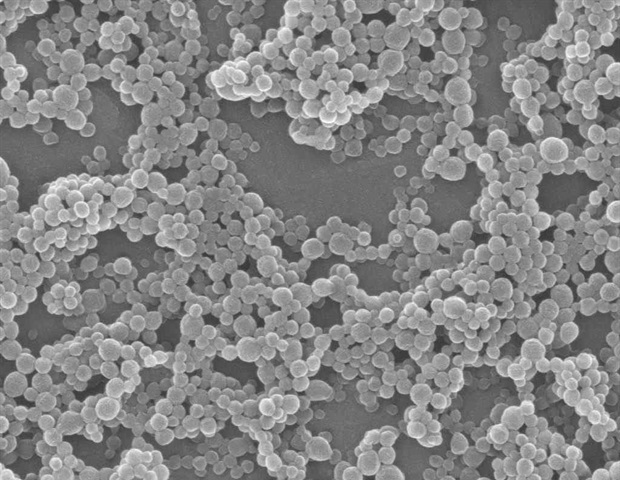A new imaging technique, developed by the teams of Professors Jinyang Liang and Fiorenzo Vetrone at the National Institute for Scientific Research (INRS), makes it possible to measure temperature in 2D, without contact, and in the blink of an eye. The results of their research have been published in the journal Nature Communication. This accurate real-time temperature sensing could one day improve photothermal therapy and aid in the early diagnosis of skin cancer.
This technology, known as Single Shot Photoluminescence Lifetime Imaging Thermometry (SPLIT), is based on the luminescence of nanoparticles doped with rare earth ions. “They are considered nanothermometers because their luminescent properties change with the temperature of the environment. They are also biocompatible”, explains Professor Vetrone, a pioneer in this field of study.
Instead of imaging the time-consuming point-to-point luminescence, SPLIT uses a new ultra-fast camera to track the rate at which luminescence decays from these nanoparticles in each spatial point. “Our camera is different from a common camera, where each click gives an image: our camera works by capturing all the images of a dynamic event in a single snapshot. Then we reconstruct them, one by one,” says Xianglei Liu. , PhD student. at INRS and main author of this article.
The temperature can then be detected by checking how quickly the emitted light fades. Since it is in real time, SPLIT can follow the phenomenon as it occurs. For the first time, it enables luminescence thermometry using the lifetime of the nanoparticle with a moving sample. “Compared to existing thermometry techniques, SPLIT is faster and has a higher resolution. This enables more accurate temperature detection with both an advanced and cost-effective solution,” adds Professor Liang, an expert in ultra-fast imaging. .
Health applications
Professors Liang and Vetrone believe that SPLIT technology could, among other things, increase the ability to detect and treat skin cancer. At the present time, the capacity for detecting melanomas, and more particularly micro-melanomas, is still limited. Existing diagnostic approaches are limited by their invasiveness, resolution and precision, which leads to a large number of unnecessary biopsies.
Optical thermometry could thus be used to detect cancer cells, whose rapid metabolism leads to a higher temperature than that of normal tissues, making them more visible with SPLIT.
To detect melanoma, clinics can use a thermal imager, but the resolution is low. “SPLIT marks an important stage in technical development. With high resolution, the technology could be used to accurately locate the cancerous mole, ”says Professor Liang.
Beyond detection, this technology could also be used to monitor the light dose during certain types of treatment. For example, photothermal therapy attacks cancer cells with the heat generated by exposure to near infrared light. “We want to eradicate the cancer, but not the surrounding tissue, so if the temperature is too high, the treatment could be lowered or stopped for a while. If it is too low, we can increase the light to get the right dose.” , says Vetrone.
In 2020, the Canadian Cancer Society estimated that 8,000 Canadians had been diagnosed with this form of cancer alone.
Source:
Journal reference:
Liu, X., et al. (2021) Large-field fast upconverting luminescence lifespan thermometry made possible by ultra-fast imaging compressed in a single shot. Nature Communication. doi.org/10.1038/s41467-021-26701-1.

“Amateur web enthusiast. Award-winning creator. Extreme music expert. Wannabe analyst. Organizer. Hipster-friendly tv scholar. Twitter guru.”
